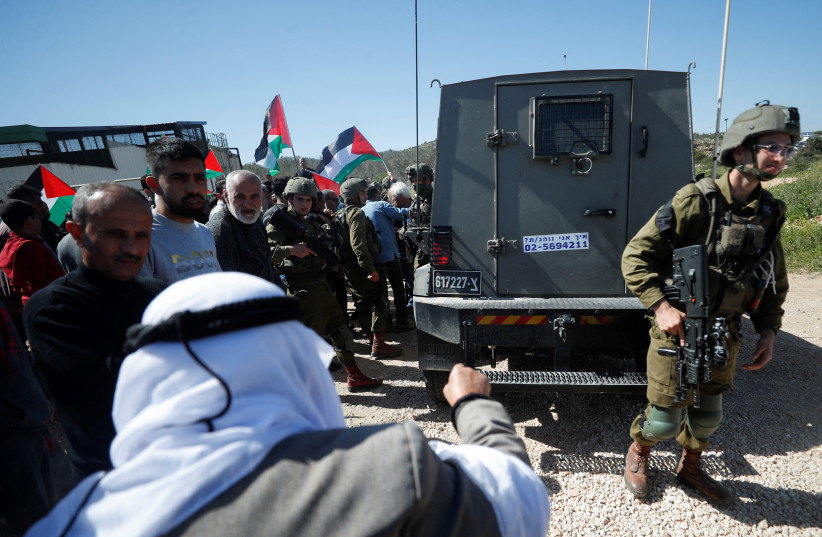Israel, Palestinians never intended to follow Sharm el-Sheikh agreement - opinion

I have spoken to some senior officials on both sides, and it seems clear that there is no real intention of actually implementing the communiqué that was agreed on in Sharm el-Sheikh.
The Israel, Palestine, Egypt, Jordan, and US meeting that took place in Sharm el-Sheikh on Sunday of this week, is an important step toward working to de-escalate the violence on the ground between Israel and Palestine. The agreements reached include important steps, unthinkable by the current Israeli government, although none of them addresses the real issue, namely, the continuation of the Israeli occupation.
Until that fundamental issue is addressed and the path is cleared for ending Israel’s control over the lives of millions of Palestinians denied basic human and civil rights, violence will continue to affect us. The occupation itself is an act of violence against the Palestinian people and Palestinian land. But that issue is not going to be addressed at any time in the foreseeable future.
There are no leaders on both sides who are willing and ready to advance real talks for peace and ending the conflict. All of that which has been agreed is within the framework of trying to manage a conflict which refuses to be managed. Nonetheless, the agreements are important, especially at the outset of the holy month of Ramadan.
What did the Sharm el-Sheikh communiqué say?
In the Sharm el-Sheikh communiqué, Israel agreed to freeze new settlement-building initiatives for a period of four to six months. National Security Adviser Tzachi Hanegbi, and head of the Shin Bet (Israel Security Agency) Ronen Bar probably undertook this obligation under US pressure, and without the agreement of the Israeli security cabinet. It will surely be a test of Prime Minister Benjamin Netanyahu’s own standing within his government to back up his representatives at the Sharm el-Sheikh meeting.
This part of the undertakings, as well as several others, go against everything that the current Israeli government stands for. My assumption is that Netanyahu will tell his ministers that the four to six month gap in settlement building will be swiftly erased immediately after that period with new, large settlement plans. That is what happened when Netanyahu agreed to a 10-month settlement-freeze during the John Kerry initiative.
The Israelis also agreed to limit Israeli incursions into Palestinian cities, “recognizing Palestinian legal rights to carry out security responsibilities in area A of the West Bank”. This is a clear demand of the Palestinians, presumably with strong backing from Jordan and Egypt. Since the beginning of 2023, 61 Palestinians have been killed by Israeli forces, including 13 minors, mostly within Palestinian cities; not all of them were combatants. These incursions have been the most powerful impetuses for increased Palestinian violence over the past months.
In exchange for Israeli undertakings, the Palestinians agreed to upgrade the security coordination with US agreement to fund and train additional Palestinian troops. In order for this to work, and for Israel to limit or cease incursions into Palestinian cities, the requirement is for Israel to share intelligence information with the Palestinian intelligence who would have the opportunity to take action, before Israel did so unilaterally.
This kind of coordination existed at different times during the Oslo agreements. It was mainly directed against Hamas, and to some extent Islamic Jihad. The Palestinian resistance today, the use of force by individuals or small cells such as the Lion’s Den is not directed by Hamas.
To the best of my understanding, and in direct contrast to what we are told in the Israeli media, Hamas in Gaza and abroad is not directing attacks against Israel. They may celebrate such attacks when they occur, but it seems to me that if Hamas truly wanted to set fire to the West Bank while keeping Gaza quiet – as Saleh al-Arouri, the deputy chairman of Hamas was recorded as saying, and as the military correspondents on Israeli television repeat to us every evening – Hamas has the ability and the recruits necessary to engage in large scale bombings and attacks that would cause a large number of Israeli casualties.
FOR SURE, Shin Bet foils a number of such planned attacks, but my educated guess would be that Hamas has not instructed or coordinated large-scale attacks against Israel.
It should be noted that the Palestinian public has a very negative attitude toward the joint Palestinian-Israeli security situation. Most Palestinians see it as the Palestinian security forces serving as subcontractors to Israel to protect Israeli settlers.
Israeli forces have a free hand to do whatever they want, anywhere in the West Bank. If they carry out activities in places where Palestinian security forces are operating, those forces go into hiding while the Israeli soldiers advance to arrest or kill whoever they want. In short, Palestinians do not feel that the Palestinian security forces are protecting them.
In my view, the most cynical part of the communiqué refers to all sides reaffirming their commitment to previous agreements made between them. The PLO and the Israeli government signed at least six agreements in the Oslo framework, all of which were substantively breached by both sides.
If they did implement the agreements, we would not be in the 30th year of a 5-year interim period. Israel would have withdrawn from more than 90% of the West Bank, even before the beginning of permanent status negotiations (that is what is implied within the “Israeli Palestinian Interim Agreement on the West Bank and the Gaza Strip” from September 28, 1995.)
Additionally, there would be Palestinian Authority presence at the Allenby Bridge (King Hussein) crossing between the West Bank and Jordan. There would also be at least one safe passage route between the West Bank and Gaza.
The Rafah crossing to Egypt would be under full Palestinian control, overseen online by Israel. There would be 26 joint Israeli-Palestinian committees and commissions working together, as well as joint patrols of Israeli and Palestinian forces, ensuring that there is no violence in the areas where they patrol – including settler violence. The list goes on and on.
Perhaps the most important section of the communiqué states: “The commitment of upholding the historic status quo at the Holy Sites in Jerusalem, both in word and in practice, and reaffirmed in this context the importance of the Hashemite custodianship/special role of the Hashemite Kingdom of Jordan. They emphasized the necessity of both Israelis and Palestinians to actively prevent any actions that would disrupt the sanctity of these sites, inter alia during the upcoming Holy Month of Ramadan, which coincides with Easter and Passover this year.” From this paper to God’s ears.
Israel announced a series of policies to ease access to Jerusalem for Muslims, which is done almost every year. In the past, Israel has provided buses from the Kalandiya junction and Bethlehem checkpoints on Fridays during Ramadan. For some reason, I suspect that National Security Minister, the outlaw, Itamar Ben-Gvir and his counterpart, the hateful Finance Minister Bezalel Smotrich and their followers will not adhere to the communiqué.
I have spoken to some senior officials on both sides, and it seems clear from their perspective, that there is no real intention of actually implementing the communiqué that was agreed on in Sharm el-Sheikh. Time will tell if this is just another Israeli-Palestinian agreement that will not be implemented.
The writer is a political and social entrepreneur who has dedicated his life to the State of Israel and to peace between Israel and its neighbors. He is now directing The Holy Land Bond and is the Middle East director for ICO – International Communities Organization.
Jerusalem Post Store
`; document.getElementById("linkPremium").innerHTML = cont; var divWithLink = document.getElementById("premium-link"); if (divWithLink !== null && divWithLink !== 'undefined') { divWithLink.style.border = "solid 1px #cb0f3e"; divWithLink.style.textAlign = "center"; divWithLink.style.marginBottom = "15px"; divWithLink.style.marginTop = "15px"; divWithLink.style.width = "100%"; divWithLink.style.backgroundColor = "#122952"; divWithLink.style.color = "#ffffff"; divWithLink.style.lineHeight = "1.5"; } } (function (v, i) { });

